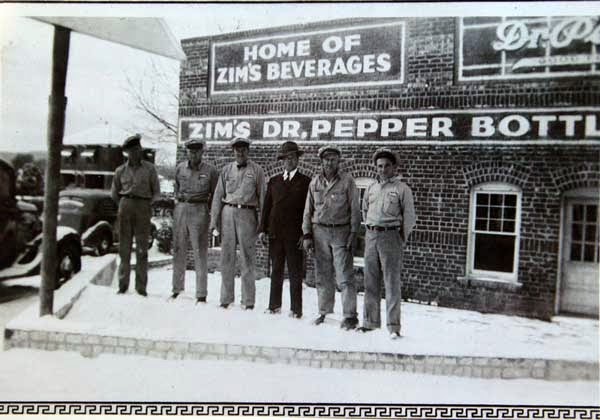Dr. Jackson Evans brings 1872
medicine to Eastland County
We
left the pavement seven miles ago. The time machine dial rolls backwards –
2008, 1941, 1917, stopping at 1872. We’re bouncing, twisting and turning
through Eastland County ’s
vast Palo Pinto Mountains Evans
Cemetery
Jackson Evans was
the first physician to permanently settle in Eastland County Eastland
County
I try to imagine
what this rough country looked like back then. Take away the mesquites, most of
the cedar. The Evans came to this ridge March 10, 1872, after a short stay at
the Allen Fort, a mile down the hill from here. Why did they pick this hidden
mountaintop? Comanches would terrorize these hills for three more years.
We reach the final
clearing, surrounded by cedar and majestic oak. The original arch-topped iron
fence surrounds the Evans Family’s final resting place, maybe forty feet square.
Bessie Hill, the
Evans older daughter, died first in 1894. Her grave is the center anchor to
this cemetery, covered with knee high crepe myrtles. This plot was overgrown
for many years, but the invading trees and brush (and rattlesnakes) have been
cleared. Good people.
Dr. Evans reports
that 1870s Eastland
County Eastland
County
Jackson Evans was
sent to school at the University in Oxford ,
Mississippi New Orleans . Dr. Evans tended the sick and
wounded during the War of Northern Aggression (Civil War).
Mrs. George Langston’s
“History of Eastland County, Texas” reports that one of Dr. Evans’ first calls in
Eastland County Erath
County
He covered a huge
swath of wilderness on horseback, then by buckboard driven by his daughter Alice.
His saddlebags were fitted to hold glass vials of medicine. Dirt poor settlers
might pay Dr. Evans in chickens or pigs, or not at all. A small fortune in
uncollected fees remained on the books when he died thirty years later.
The time machine
has been kind to these woods. The trees were thinner back then, more brush,
taller grass, more “shinery”. Some sounds stuck with this land – wild hogs, fawns
running through the thickets, rattlesnakes. Today, thankfully, no Comanche war
cries.
Dr. Evans wife
Maria presents an even bigger mystery.
She married Jackson in 1863 at her
father’s plantation in Sumpter Hill , Alabama Jackson
met Maria while she was teaching at a girl’s seminary established by her father
in Meridian , Mississippi Pendleton , South Carolina Plantation life did not follow Maria to this savage corner
of Texas .
The second Evans daughter, Alice, wrote
that “mother was often left alone with us three small children, often at night
and through the long days, but she was always so cheerful and brave, we never
knew that danger might be lurking near…Her life here, reminds one of the
missionary in a far country, as she cared for all who came and sought the
Doctor's care and in her Christian faith and integrity, had an uplifting
influence on all with whom she came in contact.”
The old wagon road to their house left the
main road between Blair’s Fort (later Desdemona) and North Fork (later Strawn),
tracing the slope of a creek as it climbed over a hundred feet in elevation to
their corral.
We retrace our
steps. Across a small meadow, a stacked rock chimney peeks out of the dense
brush, the crown of the original Evans log cabin, over twenty-five feet in the
air. Cabin logs lie rotting in the brush.
Dr. Evans grasped
the sacrifices his family made. “My three children were then very small, but I
had often to leave them and their mother alone when there was danger of
Indians. We stopped near a cow-ranch for protection – as there was no town in
the county – and we are still at our old stand with all the practice I can do.”
Dr. Evans’ land holdings exceeded 2,000 acres at one point. The family raised
cattle and horses. “They planted one of the first orchards in the
county, and Maria dried peaches, apricots, and apples for use during the winter,”
a granddaughter tells us. “Deer, turkey, bear and an occasional piece of
buffalo meat brought by a passing hunter were diet staples. Such luxury items
as coffee, sugar and wheat flour were scarce because supplies had to be hauled
from Waco or Fort Worth . My grandmother recalls that her
father received a box of medicines from Stephenville which arrived before
Christmas with some red stick candy and a note saying ‘for the children, from
Dr. West’.”
Mrs. Evans raised
the children, nursed her husband’s patients, ran the kitchen, and educated her children.
She later taught at the first school located at the Allen Fort.
It’s
time to leave. There’s a light wind in the trees. The smell of cedar. There are
no sirens, car horns, pump jacks or airplanes. We are standing in true wilderness,
at the front door of a family that helped birth Eastland County
This story is excerpted from the book
“Tabernacle – The Back Road to Alameda
SUGGESTED CAPTIONS
1.
Dr. Jackson Evans, first doctor in Eastland County
2.
Evans Homestead chimney peaking through the brush.
3.
The Evans
Cemetery
4.
Dr. and Mrs. Evans headstone, both born in 1837, both
passing in 1908.





No comments:
Post a Comment